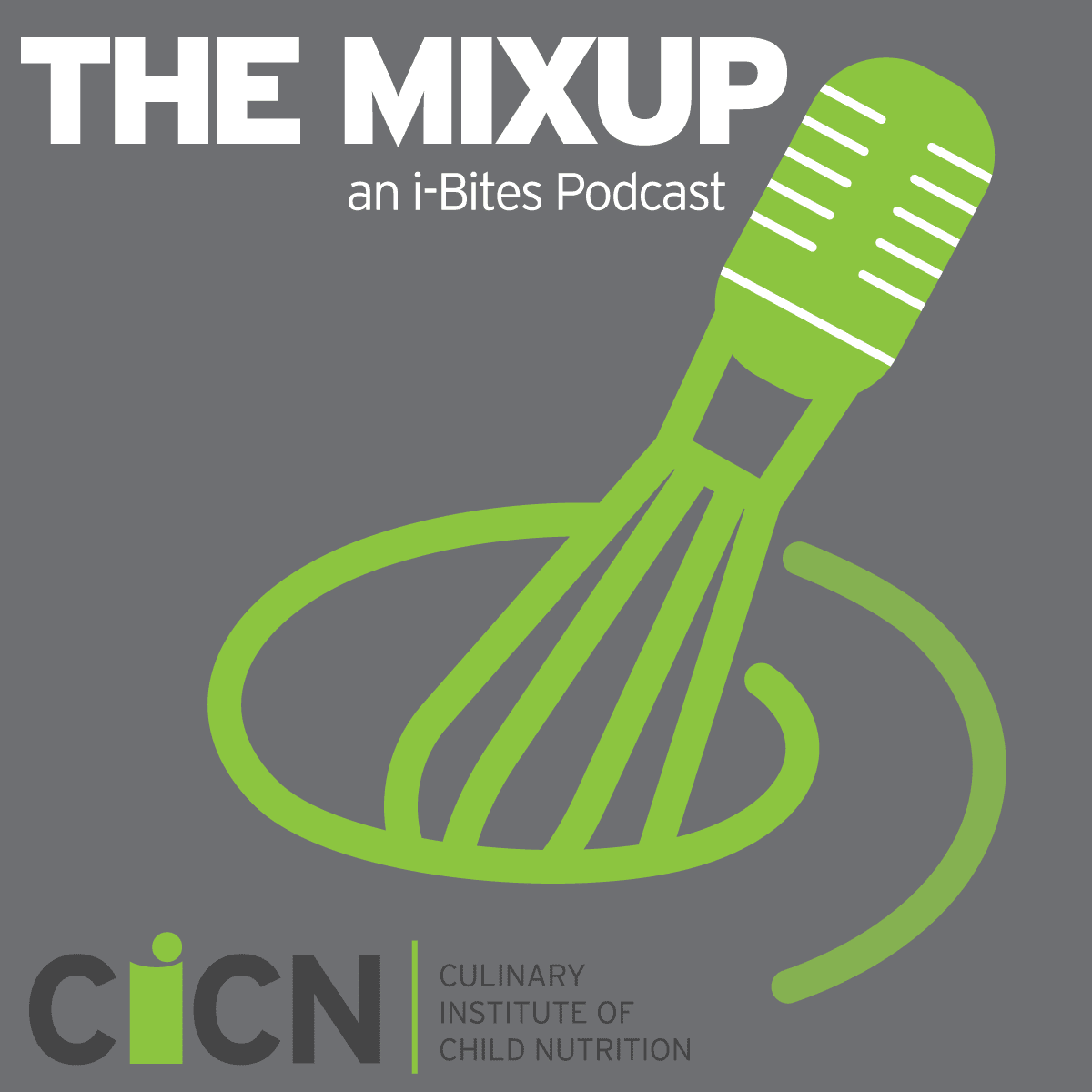The Mix Up Podcast – Episode 13- Ben Atkinson

CICN’s Garrett Berdan interviews Ben Atkinson, Assistant Director of Child Nutrition, Auburn School District in Washington state.
Podcast: Play in new window | Download
Subscribe with: Apple Podcasts | Spotify | Android | RSS | More
iBites Podcast Episode 21 – ICN Project Updates
Welcome to iBites! The ICN podcast.
This episode of iBites is an update of ICN’s upcoming and recently released projects. Host Patrick Butler is joined by ICN’s Education and Training Specialists.
HOW TO SUBSCRIBE
Podcast: Play in new window | Download
Subscribe with: Apple Podcasts | Spotify | Android | RSS | More
The Mix Up Podcast – Episode 12- Warren DeShields

Chef Patrick is joined by Warren DeShields, Director of Food Services Bridgeton Public Schools. Listen as they discuss their journey to child nutrition and the work the Bridgeton Public Schools team has done to close the food insecurity gap during the pandemic. Warren also shares how their district is using online ordering for students!
Podcast: Play in new window | Download
Subscribe with: Apple Podcasts | Spotify | Android | RSS | More
The Mix Up Podcast – Episode 11- Devinder Kumar

Join Chef Patrick Garmong and Chef Devinder Kumar of Wonderful College Prep Academy. Chef Devinder shares how he and his team move forward to bridge the food insecurity gap while serving nutritious and delicious global cuisine. In addition, Chef Devinder sheds light on his journey to the child nutrition world and the impact he and his team have had on educating students through food.
Podcast: Play in new window | Download
Subscribe with: Apple Podcasts | Spotify | Android | RSS | More
The Mix Up Podcast – Episode 10 – Brandon Durio

In this episode of The Mixup, Chef Brandon Durio of Cherry Creek School District shares his experience being welcomed into school nutrition by a forward-thinking program director who saw the benefits of hiring an executive chef. In Chef Brandon’s 8 years in the district he has provided culinary training, introduced new menu items, built up the catering program, and streamlined the district’s central baking production. Chef Brandon also shares why he thinks school nutrition is an ideal work environment for chefs looking for a better quality of life.
Podcast: Play in new window | Download
Subscribe with: Apple Podcasts | Spotify | Android | RSS | More
The Mix Up Podcast – Episode 09 – Dan Giusti

Join Chef Patrick and Chef Dan Giusti as they discuss Dan’s pathway from restaurant chef to the Child Nutrition field. Hear how Dan has helped reshape Child Nutrition kitchens from a heat-and-serve production model to a more scratch-based approach to preparing delicious food for students.
Podcast: Play in new window | Download
Subscribe with: Apple Podcasts | Spotify | Android | RSS | More

